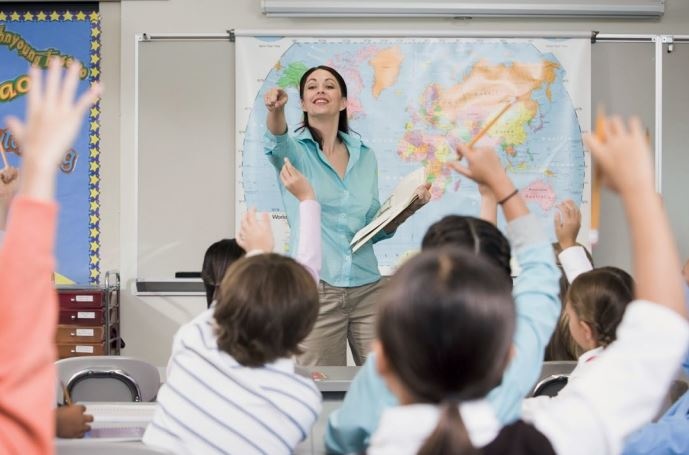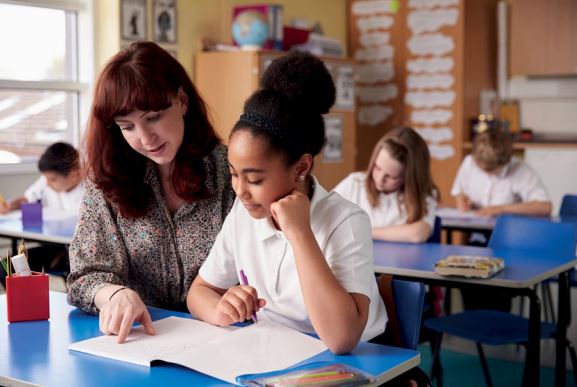
Do you know an avid reader who hates English class? A teenager who is both a marvelous writer and a hopeless procrastinator? It certainly isn’t easy to decode children’s behavior, but for gifted children, and especially twice exceptional children (gifted children with learning disabilities), the code can be especially hard to crack. Teachers who are attuned to the possibility of their students’ giftedness, who understand what makes gifted children tick, can avoid a frustrating tug-of-war and help their students’ creativity thrive. But first – what does the term “gifted” really mean?
Nathan Levy, author of the children’s book There Are Those, writes, “there are those, and they are few, who see…so much more…than others do.” Gifted educator Christine Nobbe seconds this definition: “Sometimes I’ll think giftedness is a construct. Then I’ll get to know a student, and I’ll think, yes – gifted. You know when it you see it,” she says. The behavior ranges: many high-achieving gifted students ask challenging questions of the teacher -- even to the point of seeming rude -- and demonstrate a strong willingness to redo assignments, always asking for more. Low-achieving gifted students may read a book in a day but struggle with task completion and projects. Many gifted students have high verbal acuity and a precocious sense of humor. Twice-exceptional students may have a passionate interest in a single subject with a tendency toward mismatched scores in reading or math. Emotionally, gifted children are subject to depression, anxiety, perfectionism, over-excitability and emotional intensity. They often lean toward introversion and a tendency to experience the world intuitively. Above all, “learning motivates gifted kids, not education. They generally aren’t impressed by grades or scores,” says gifted educator Dr. Robin Lady.
Jane Piirto, Ph.D., author of Talented Children and Adults, acknowledges that there is still “wide confusion about concepts of giftedness, talent and intelligence,” and points out that in the United States, there have been several attempts starting in the early 1970s to move beyond IQ score as the primary means of identification. For example, former commissioner of US Office of Education Sidney Marland has suggested that beyond intellectual giftedness, students can be gifted in specific academic, creative, leadership, artistic and/or psychomotor areas. Despite the variety of gifts and talents that children possess, intelligence researchers have proven that general intelligence – known as “the big g” – plays an important role in the articulation of more specific talents. The bottom line, according to Dr. Piirto, is that students who manifest gifted characteristics in school “have a right to an education that is differentiated according to these characteristics.”
Dr. Lady echoes this sentiment: “we have construed the word gifted to make it sound elite – it’s not – it’s receiving an education at your level. In the United States, we are required to differentiate for students on the other end...” According to a report issued by the Missouri Department of Elementary and Secondary Education, “universal screening,” in which all students in a specific grade level are systematically assessed for gifted characteristics, is one way to provide more equitable means of identification. The report also suggests a “20 percent equity index rule” for participation in gifted programs by minorities, to allow for cultural differences and voluntary exclusion – in other words, if 40 percent of an elementary school is English Language Learners, 32 percent of the school’s gifted students should be ELLs. The report offers detailed methods for fairly identifying poor and minority students, including multiple selection criteria, better teacher training to recommend these students and the re-testing of students who don’t meet legal criteria but demonstrate strong potential. For general education teachers who do not have an established gifted program in their school, Dr. Lady suggests identifying the top five percent of academic achievers, assuming they need more, and modifying instruction accordingly.

So what does instruction for gifted students look like? Gifted educator Dr. Felicia Dixon points out that “in gifted education, we say that our strategies are good strategies for everybody, and necessary strategies for gifted students.” Here are some strategies that will help you meet the needs of your gifted students, while likely improving your instruction for all:
Problem-Based Learning
According to Edutopia, problem-based learning is a subset of project-based learning. The two “PBLS” are more similar than different, and benefit gifted students by being student-centered and requiring high level thinking skills. As education consultant Thom Markham puts it, PBL “reverses the equation between skills and content.” Dr. Dixon outlines four steps to PBL: